I tested 10 eco-friendly detergents and this is what I found...
User
7 years ago
last modified: 7 years ago
Featured Answer
Sort by:Oldest
Comments (90)
User
7 years agosandy1616
7 years agoRelated Discussions
small bath with tub 100% finished - Eco-friendly
Comments (9)I love the TP holder, how the towels bring all the colors together, and your attention to the small details. I added the TP holder to my own bathroom notes. We are doing a gut in a year or two. I will also be using Swanstone for walls, but also using their ADA floor with the trough drain at the outer edge. I plan to take the wall panels to the ceiling. Is the cost so much more to do so, or did you simply like the more traditional look of lower shower walls? Mine is in an alcove, so I think that makes more of an argument for going all the way up for me, too. Are you loving the wall panels? Is the niche working well for you? I can't wait to get rid of my wire shampoo bottle hanger! I had a Toto with the special glazing inside in my last house. Don't you find that you don't need to use the toilet brush as often? I miss mine. I might steal your idea for the crown molding, too. I really admire your use of ecologically conscious materials. That is harder to do in a bath. Great Job!...See MoreSmall bath w/ tub 100% finished - Eco-Friendly
Comments (5)Here's some more photos....I love my recessed toilet paper holder because the old one was attached at floor level behind the toilet! I read somewhere the ceiling is the 5th plane so this one is sky blue. The crown molding is recycled styrofoam....Tibron... and very inexpensive. Here's the floor plan for a 5 x 7 bathroom I copied from this Forum....See MoreDishwashing Detergent Capsules: Environmentally Friendly?
Comments (3)I've tried to find out 'why the capsules?'. It seems convenience and ease of use. Pre-measured etc. Or maybe with powder, if your cup/fill spot is awkward, the powder granules could prevent the 'door' from activating properly. I use SeventhGeneration powder, not pods. And yes, it has popped open when it should not...jury still out on that one. I also prefer to control how much i use. I may use a bit less detergent for a lighter load. My old washer was hard to load with powder, went everywhere so switched to SGen gel. More important i think, with the new washers using less water and working more efficient, is to take advantage of the settings. I use the ECO setting 9 out of 10 times. A gunkier, stickier meal, i will boost the setting a bit higher/stronger....See MoreEnviro Friendly Laundry detergent?
Comments (13)Here you are: Consumers have become much more concerned about how the products they use impact the environment in recent years. Unfortunately, it can be difficult for even highly educated consumers to find out just what ingredients are in certain products, and how they might impact the environment. Take the leading brand laundry detergents. You certainly wont get a straight answer by looking at the ingredients label, where you typically find the following cryptic message: "Ingredients include surfactants (anionic and nonionic) and enzymes." We cannot provide you with specific ingredients used in Tide or other name brand laundry detergents, for a couple reasons. First of all, companies are not required by law to list their ingredients, and claim that their formulations are confidential. Secondly, the ingredients they use change periodically, whether due to reformulation or simply the use of alternative ingredients to reduce costs. However, the following list of ingredients commonly used in the leading brands, along with a description of how they impact the environment, should give you a good idea of whatÂs really inside: Alkyl benzene sulfonates or ABS (also linear alkyl benzene sulfonates or LAS, linear alkyl sodium sulfonates). A class of synthetic surfactants (usually identified as "anionic surfactants.") ABS are very slow to biodegrade and seldom used. LAS, however, are the most common surfactants in use. During the manufacturing process, carcinogens and reproductive toxins such as benzene are released into the environment. While LAS do biodegrade, they do so slowly and are of low to moderate toxicity. LAS are synthetic. The pure compounds may cause skin irritation on prolonged contact, just like soap. Allergic reactions are rare. Because oleo-based alternatives are available, LAS should not be used. Alkyl phenoxy polyethoxy ethanols (also nonyl phenoxy ethoxylate or nonyl phenol). This is a general name for a group of synthetic surfactants. They are slow to biodegrade in the environment and have been implicated in chronic health problems. Researchers in England have found that in trace amounts they activate estrogen receptors in cells, which in turn alters the activity of certain genes. For example, in experiments they have been found to stimulate the growth of breast cancer cells and feminize male fish. One member of this family of chemicals is used as a common spermicide, indicating the general level of high biological toxicity associated with these compounds. Artificial fragrances Artificial fragrances are made from petroleum. Many do not degrade in the environment, and may have toxic effects on both fish and mammals. Additionally, they often can cause allergies and skin or eye irritation. Diethanolamines (also diethanolamine, triethanolamine and monoethanolamine). A synthetic family of surfactants, this group of compounds is used to neutralize acids in products to make them non-irritating. Diathanolamines are slow to biodegrade and they react with natural nitrogen oxides and sodium nitrite pollutants in the atmosphere to form nitrosamines, a family of potent carcinogens. EDTA (ethylene-diamino-tetra-acetate). A class of synthetic, phosphate-alternative compounds used to reduce calcium and magnesium hardness in water. EDTA is also used to prevent bleaching agents from becoming active before they're immersed in water and as a foaming stabilizer. EDTA does not readily biodegrade and once introduced into the general environment can re-dissolve toxic heavy metals trapped in underwater sediments, allowing them to re-enter and re-circulate in the food chain. Optical brighteners Optical brighteners are a broad classification of many different synthetic chemicals that, when applied to clothing, convert UV light wavelengths to visible light, thus making laundered clothes appear "whiter." Their inclusion in any formula does not enhance or affect the product's performance in any way; they simply trick the eye. Optical brighteners do not readily biodegrade. They are toxic to fish when washed into the general environment and can create bacterial mutations. They can cause allergic reaction when in contact with skin that is then exposed to sunlight. Most optical brighteners are given trade names which consumers are unlikely to see on a label. Petroleum distillates (also naphthas). A broad category encompassing almost every type of chemical obtained directly from the petroleum refining process. Any ingredient listed as a "petroleum distillate" or "naphtha" should be suspect as it is, firstly a synthetic and, secondly, likely to cause one or more detrimental health or environmental effects. Phosphates A key nutrient in ecosystems, phosphates are natural minerals important to the maintenance of all life. Their role in laundry detergents is to remove hard water minerals and thus increase the effectiveness of the detergents themselves. They are also a deflocculating agent; that is, they prevent dirt from settling back onto clothes during washing. While relatively non-irritating and non-toxic in the environment, they nonetheless contribute to significant eutrophication of waterways and create unbalanced ecosystems by fostering dangerously explosive marine plant growth. For these reasons they are banned or restricted in many states. Products containing phosphates should be considered unacceptable. Note: The major laundry detergent manufacturers no longer use phosphates in their formulations. Polycarboxylates Similar in chemical structure to certain plastics and acrylic compounds, these are relatively new, synthetic phosphate substitutes. Because they are recent additions to the consumer product chemical arsenal, however, their effects on human and environmental health remain largely unknown. Though tests show they are non-toxic, do not interfere with treatment plant operation and generally settle out with the sludge during water treatment, until further study and analysis are conducted, use of this ingredient is not recommended. Further, they are not biodegradable and are petroleum based. Polyethylene glycol (also PEG). Another type of anti-redeposition agent, PEG is a polymer made from ethylene oxide and is similar to some non-ionic detergents. Not considered toxic, it takes large doses to be lethal in animals. However, PEG is slow to degrade and is synthetic. Quaternium 15 An alkyl ammonium chloride used as a surfactant, disinfectant and deodorant that releases formaldehyde, a potent toxin. Xylene sulfonate Xylene is a synthetic that, when reacted with sulfuric acid, creates a surfactant. Slow to biodegrade in the environment and moderately toxic....See MoreUser
7 years agosocalgal_gw Zone USDA 10b Sunset 24
7 years agohisown
7 years agosspeer9
7 years agosandy1616
7 years agoUser
7 years agosspeer9
7 years agoUser
7 years agosspeer9
7 years agoprairiemoon2 z6b MA
6 years agosspeer9
6 years agoprairiemoon2 z6b MA
6 years agolast modified: 6 years agoprairiemoon2 z6b MA
6 years agosspeer9
6 years agoprairiemoon2 z6b MA
6 years agolast modified: 6 years agosspeer9
6 years agoJody
6 years agomamapinky0
6 years agoprairiemoon2 z6b MA
6 years agoprairiemoon2 z6b MA
6 years agolast modified: 6 years agosspeer9
6 years agoprairiemoon2 z6b MA
6 years agomamapinky0
6 years agomamapinky0
6 years agobeaglenc
6 years agoprairiemoon2 z6b MA
6 years agolast modified: 6 years agoprairiemoon2 z6b MA
6 years agolast modified: 6 years agorecordaras
6 years agolast modified: 6 years agoprairiemoon2 z6b MA
6 years agolast modified: 6 years agoprairiemoon2 z6b MA
6 years agohcbm
6 years agorecordaras
6 years agoLarisa Batchelor
6 years agolast modified: 6 years agomamapinky0
6 years agodadoes
6 years agoprairiemoon2 z6b MA
6 years agolast modified: 6 years agoprairiemoon2 z6b MA
6 years agolast modified: 6 years agoLarisa Batchelor
6 years agolast modified: 6 years agohcbm
6 years agoprairiemoon2 z6b MA
6 years agolast modified: 6 years agoprairiemoon2 z6b MA
6 years agoLarisa Batchelor
6 years agomamapinky0
6 years agoprairiemoon2 z6b MA
6 years agolast modified: 6 years agoLarisa Batchelor
6 years agorococogurl
6 years agolast modified: 6 years agoLarisa Batchelor
6 years ago
Related Stories
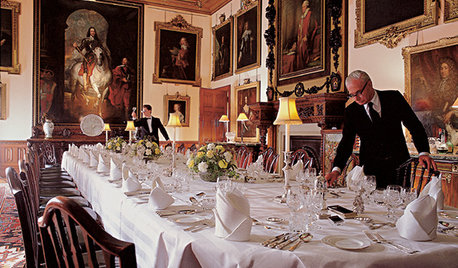
FUN HOUZZEverything I Need to Know About Decorating I Learned from Downton Abbey
Mind your manors with these 10 decorating tips from the PBS series, returning on January 5
Full Story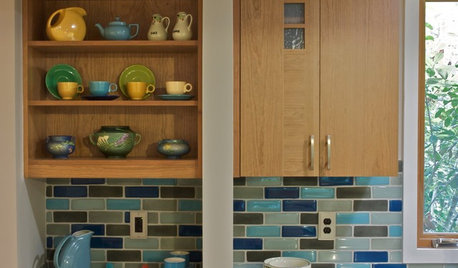
REMODELING GUIDES10 Great Picks for Eco-Friendly Tile
Go a little greener with beautiful tiles created with reclaimed and recycled materials
Full Story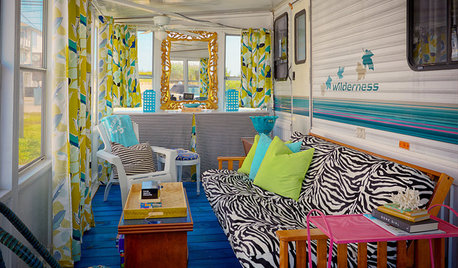
LIFEYou Said It: ‘They Looked at Me Like I Had 10 Heads’
Design advice, inspiration and observations that struck a chord
Full Story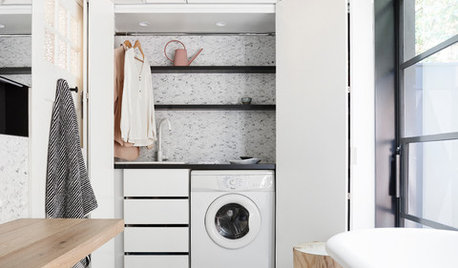
LAUNDRY ROOMSWhere Can I Hide My Laundry Area?
It’s a case of now you see it, now you don’t with these 10 clever ways of fitting in a laundry zone
Full Story
KITCHEN DESIGNEco-Friendly Materials: Kitchen Countertops
Going green in the kitchen opens the door to unusual countertop materials that are beautiful, durable and kind to the planet
Full Story
KITCHEN CABINETSWhy I Combined Open Shelves and Cabinets in My Kitchen Remodel
A designer and her builder husband opt for two styles of storage. She offers advice, how-tos and cost info
Full Story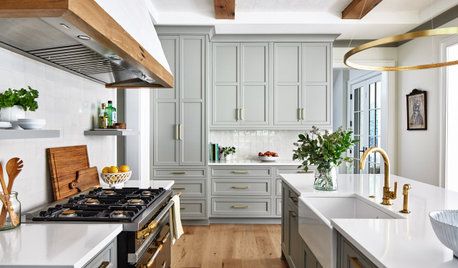
CLEANINGEco-Friendly Tips and Tricks for Cleaning Your Home
Are you wary of using chemicals to clean? These simple products and tricks will keep your home spotless naturally
Full Story
DECORATING GUIDESThe Dumbest Decorating Decisions I’ve Ever Made
Caution: Do not try these at home
Full Story
KITCHEN COUNTERTOPSWhy I Chose Quartz Countertops in My Kitchen Remodel
Budget, style and family needs all were taken into account in this important design decision
Full Story
HOUZZ TVSee an Eco-Friendly Backyard Cottage in 700 Square Feet
In this video, watch how a green builder helps a Seattle couple create an energy-efficient home inspired by Houzz photos
Full Story


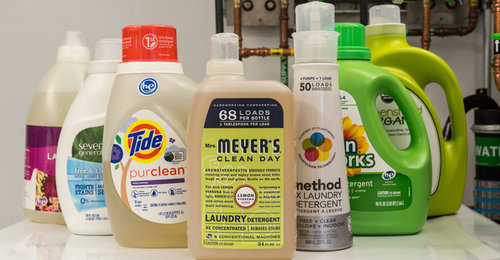
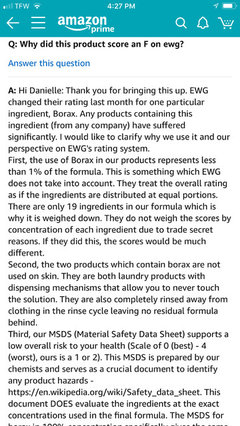

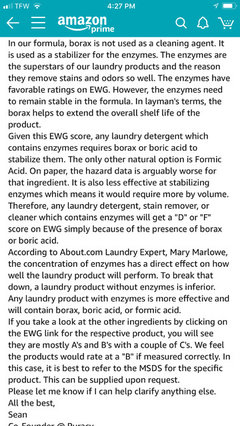
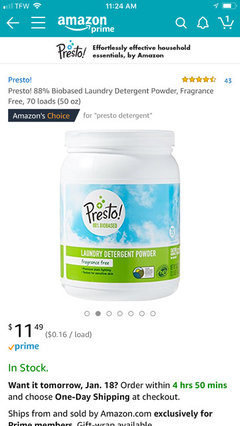

suburbanmd